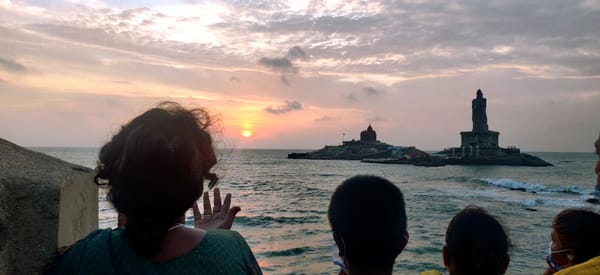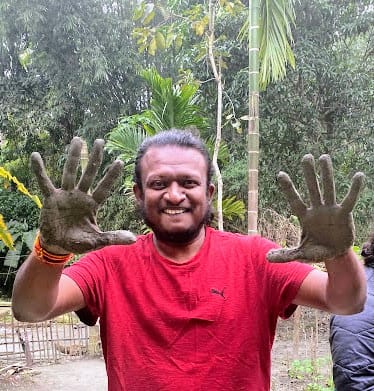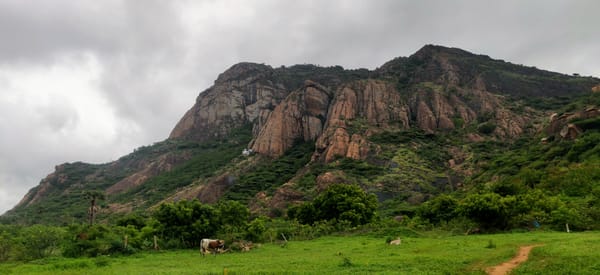Kulasai Dussehra 2023
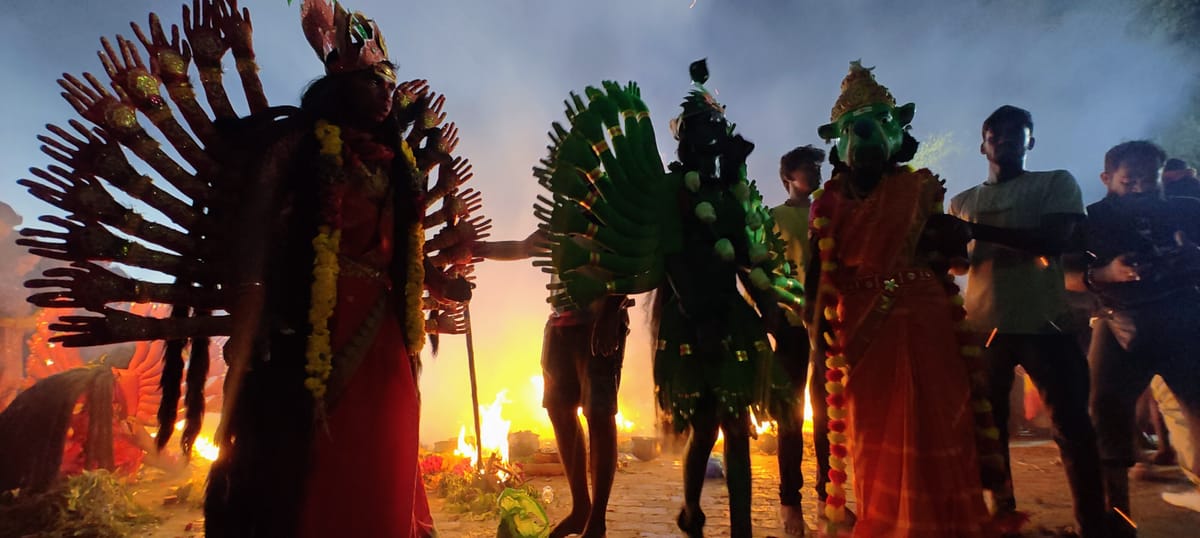
Kulasekharapatnam aka Kulasai, a small coastal village on the east coast of India, holds the second position for the famous Dussehra festivities after Mysore. The town was named in the era of King Kulasekarapandian, as the story goes the king had an auspicious sighting of the Goddess Mutharamman, leading to the town being named in his honor. Arulmigu Mutharamman Temple, 300 year old temple is the center of the Dusserah festivities. I've been visiting this temple since 2020 but my last few Dusserahs were in the northern parts of India. In 2023, everything aligned and I was all set to visit my first Dusserah at Kulasai.
From the morning of 24th October, I was excited and high on energy. Something within me wanted to be there and see through the whole festival. My expectations were high even though I hadn't seen or read about it. The place is about 75kms from my home in Kanyakumari and I started from home post lunch. Throughout the way, I kept seeing autos, bikes, vans, and lorries full of people dressed up like those school fancy dress competitions and everyone was in a festive mood. As they saw me click photos they were happy to pose while on the move. Almost all of them exchanged a very warm smile and my curiosity about the festival started rising.
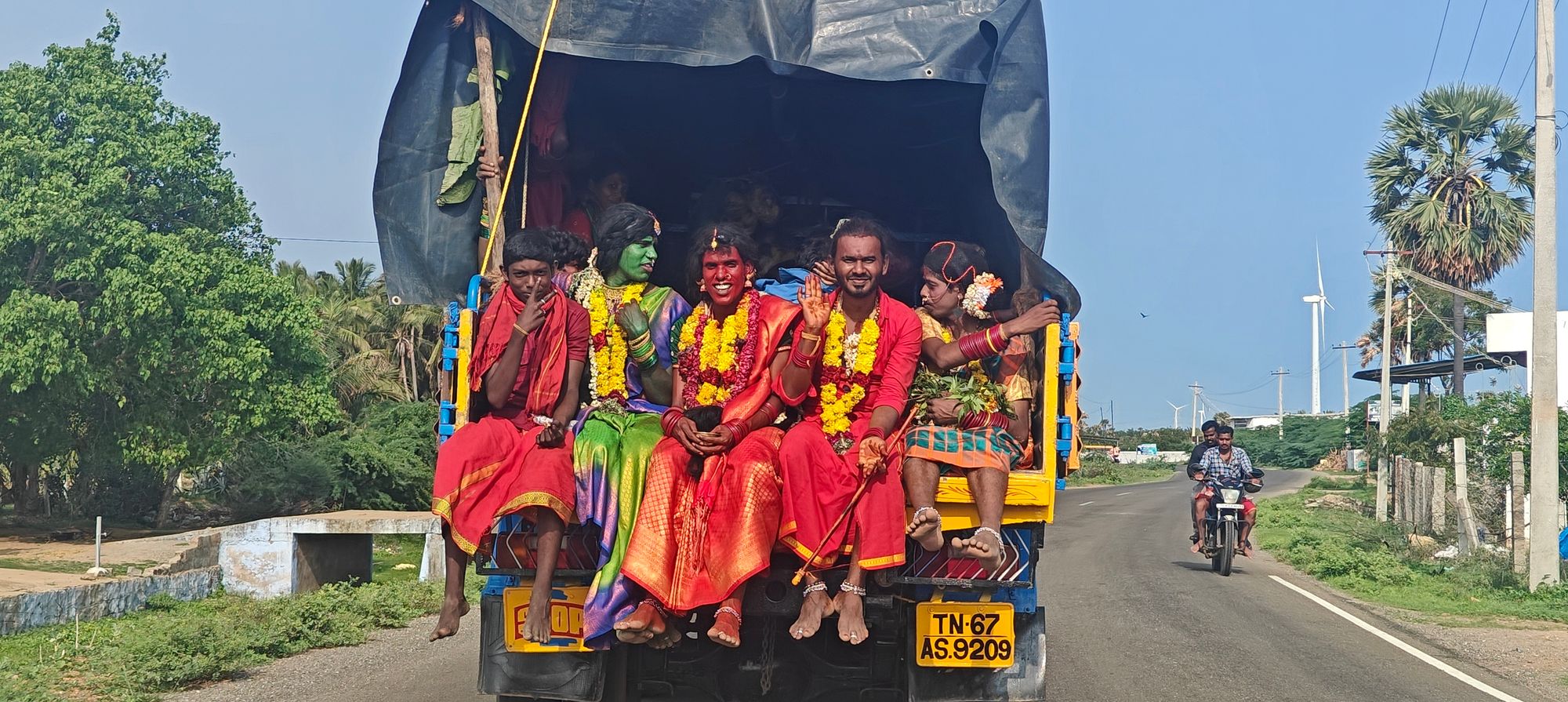
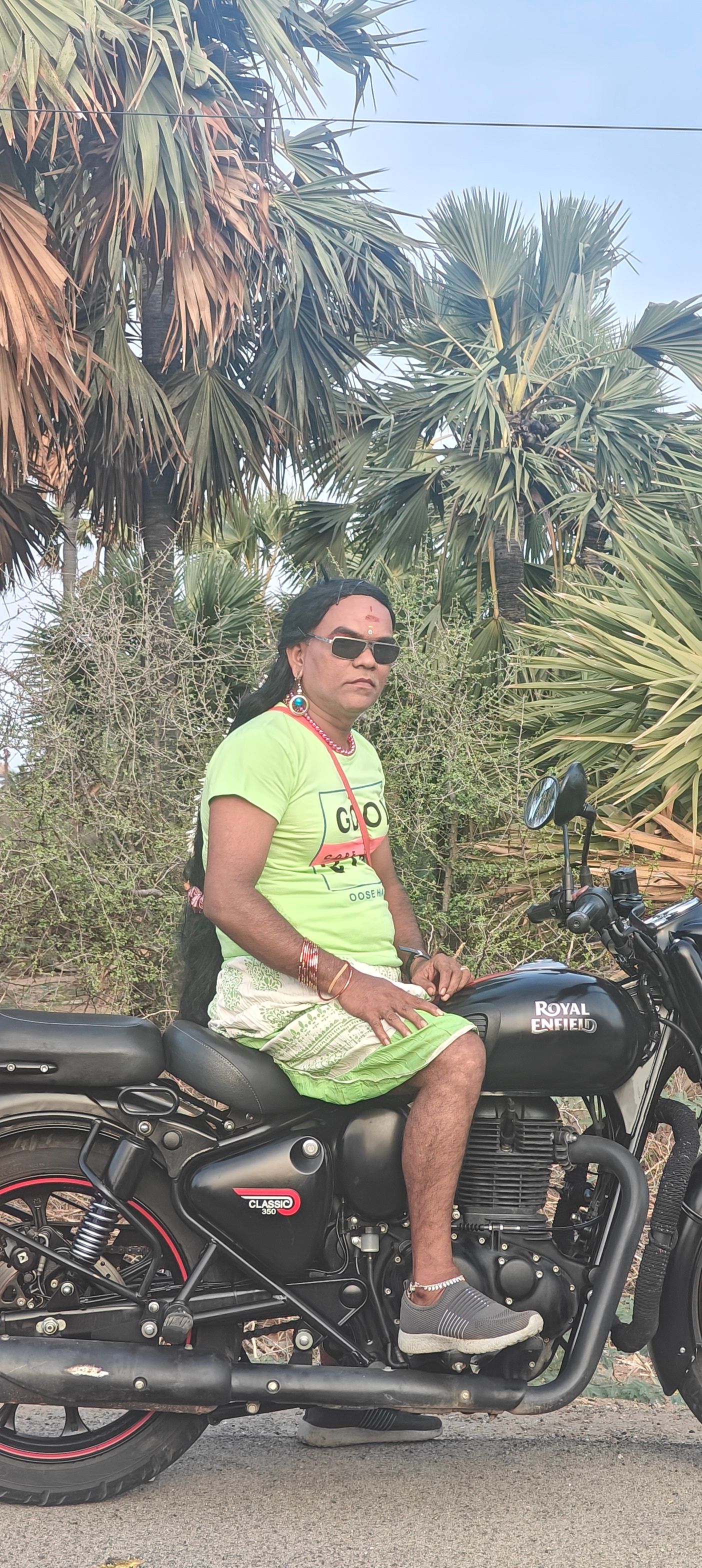
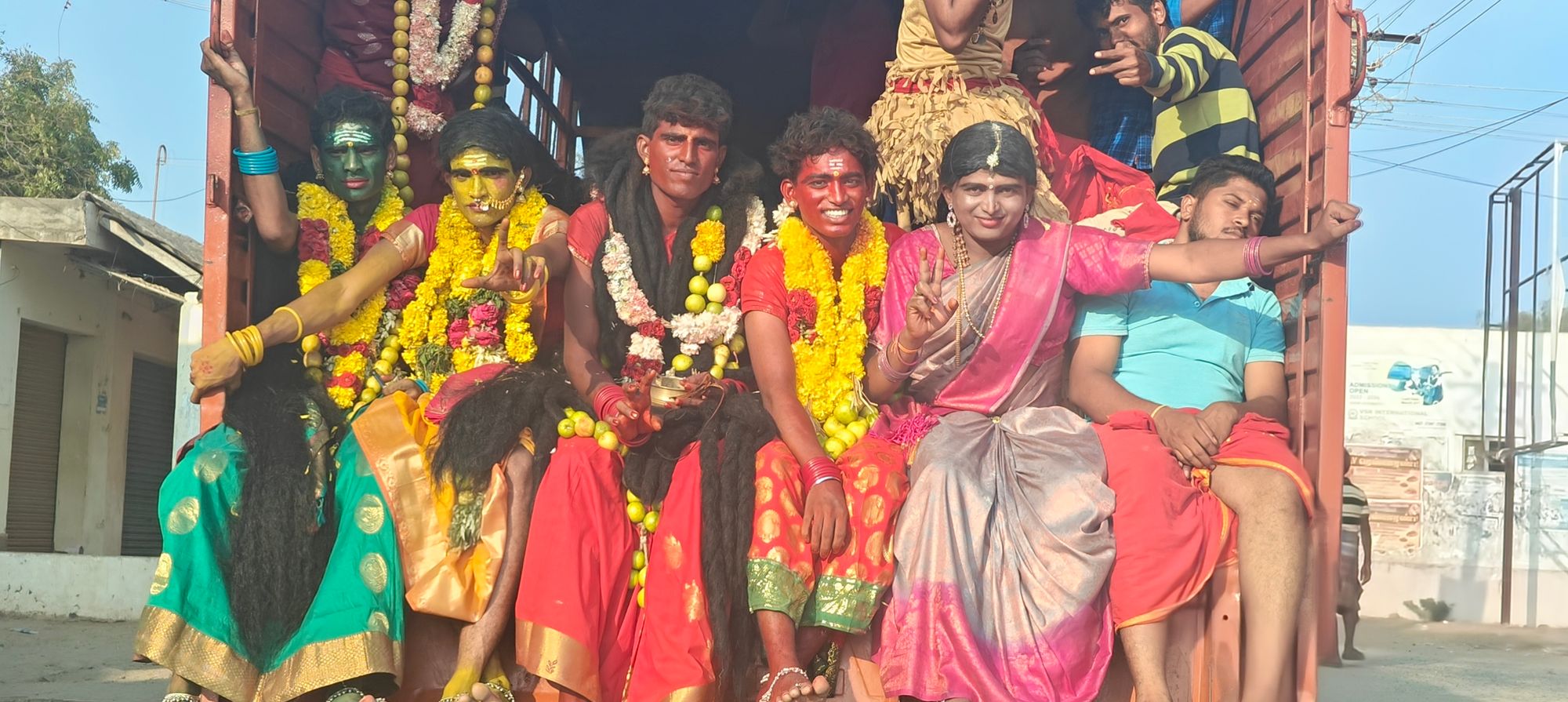
In Kulasai, all traffic was stopped on the bypass roads and a 2km walk led to the temple area. As time went on, the crowd started to build and this walking distance for many had gone upwards of 6kms. Visiting the temple was the first on my agenda until I saw the queue. Easily, it would have taken me another 10 to 15 hours to visit the main sanctum. I decided to skip the temple and straight head to the beach area a few hundred meters away.
I walked through the lanes of Kulasai, along with a thousand others window shopping in the temporary festival shops. The air was filled with the smell of local delicacies that were freshly prepared in every corner of the festival area. To my surprise the panipuri shops outnumbered the vada and bhajji counters. The South is loving the North, I thought to myself.
The main attraction of the night is the soorasamharam, a folk performance depicting the victory of good over evil. The event has a viewing audience of a few lakhs. This is the main attraction of the night and people start occupying their seats with their groups as early as 4 PM for the mega event that is scheduled for midnight. Most people who walked with me decided to go and block their spot for the night. I decided to walk further and head to the place where the performers placed the fire pots and removed their masks.
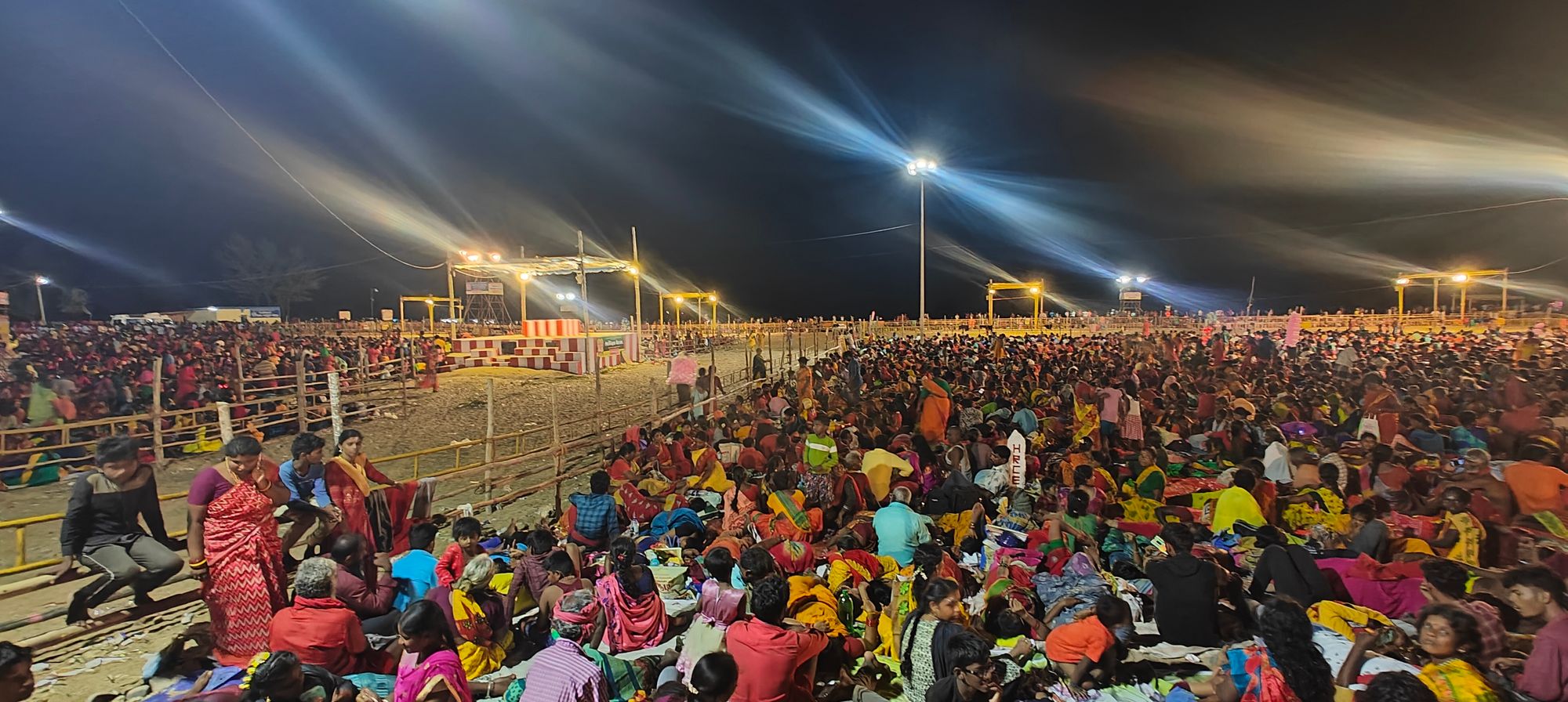
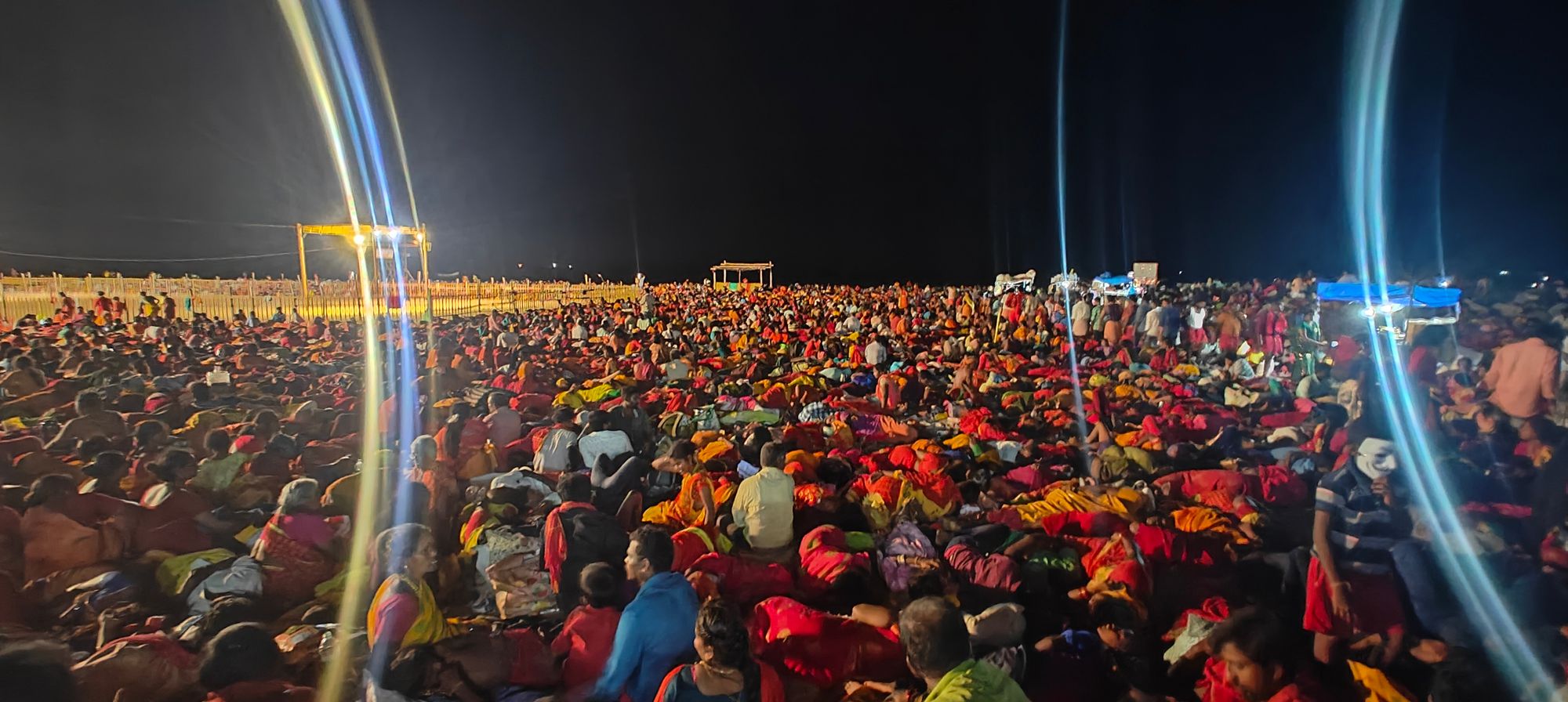
Before we get there, some context to the festival preparations. A few months before Dasara; families, villages, friends, communities, and religious people form groups of their liking. Group sizes vary from 5 to a few hundred. Each member of the group gets a specific task leading to the festival day. They arrive at the festival arena a day or two prior along with their group members. usually, the mode of transport is a private van or bus. The vehicle is packed with all the cooking utensils and the groceries required to feed the entire group. Each member of the group picks up a task, cutting vegetables, cleaning utensils, cooking...etc.
Kids of the group roam around and play, women are usually in charge of the food, and teenage boys walk to survey the festive area with their new clothes and look for eye contact with the pretty girls from other towns. Dialogues and eye contact keep flying around during the walks around the temple area. Adult men relax, play cards, chat as a group, and watch the kids play. Evenings are a time for concerts. Music, dance, magic, and other entertainment happening in a 5km radius with viewing galleries in the open that can accommodate a few thousand. Ample enough to keep everyone entertained.
Devotees arriving for the festival observe a 41-day fast, including Navarathri culminating in the last ten days. During this period they avoid any form of intoxication and committing any sinful acts.
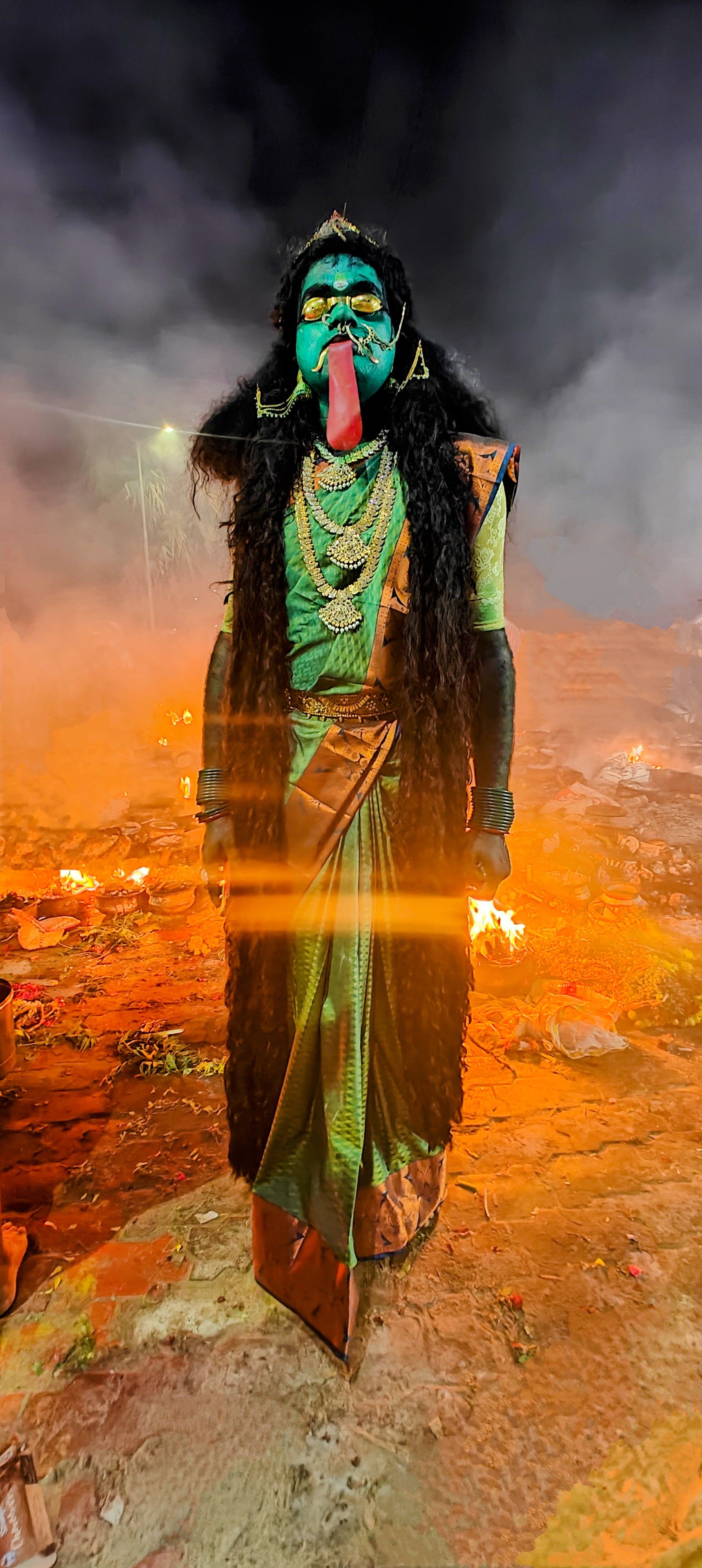
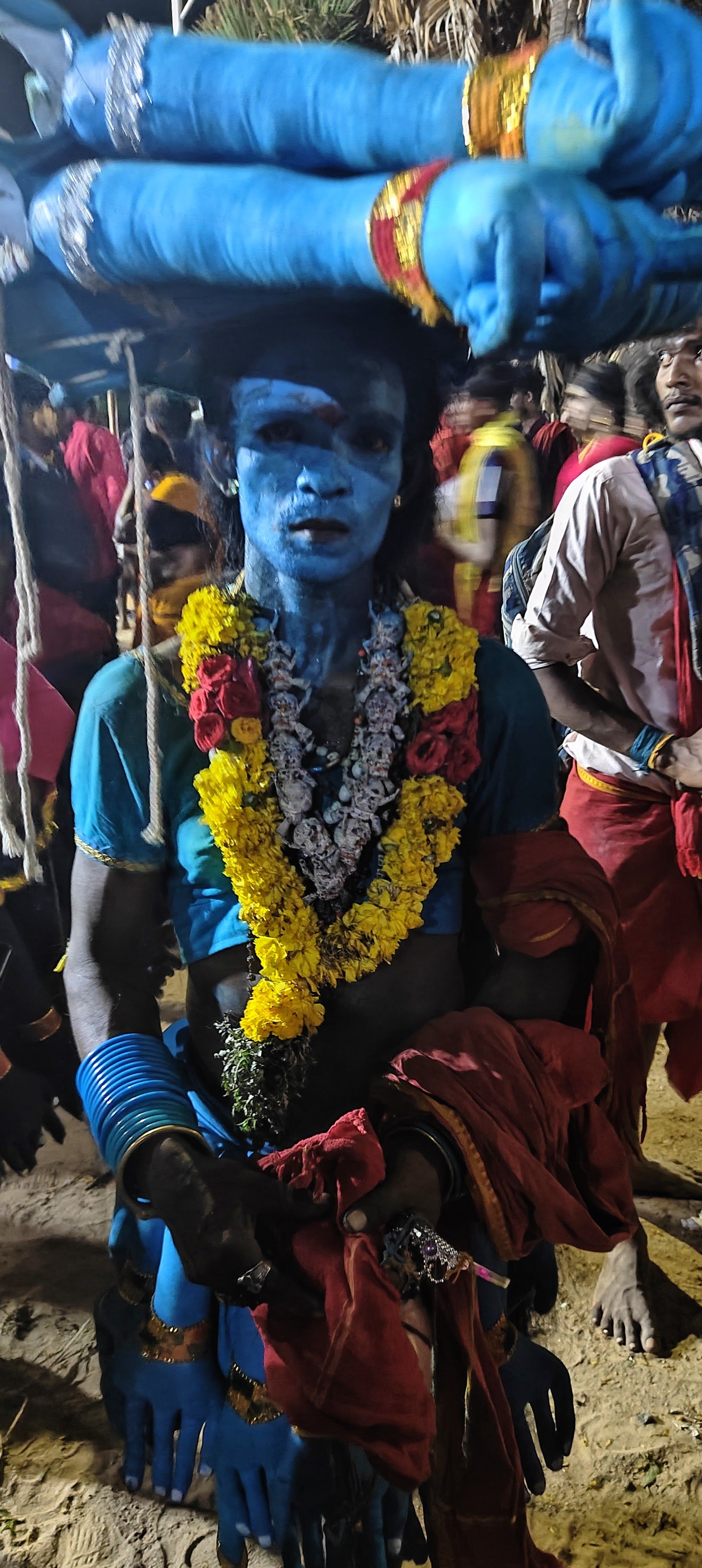
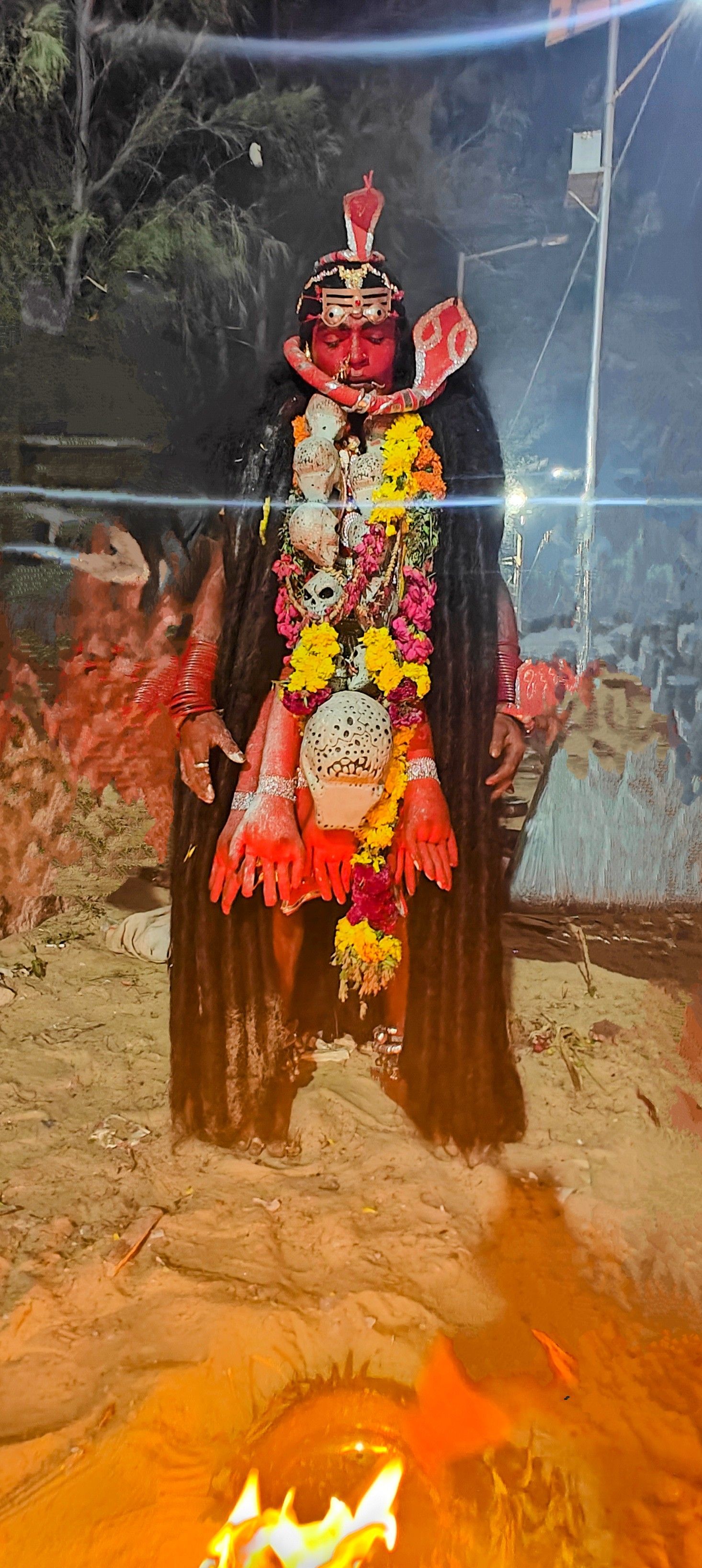
On the tenth day (Dasara), devotees don these costumes, perform rituals at the temple, and then cleanse themselves in the sea. Some embody Goddess Kali or other local Tamil deities such as Chudalamadan, Changalamadan, Asuran, and Kariyilamadan. Seeking blessings, people approach these adorned devotees.
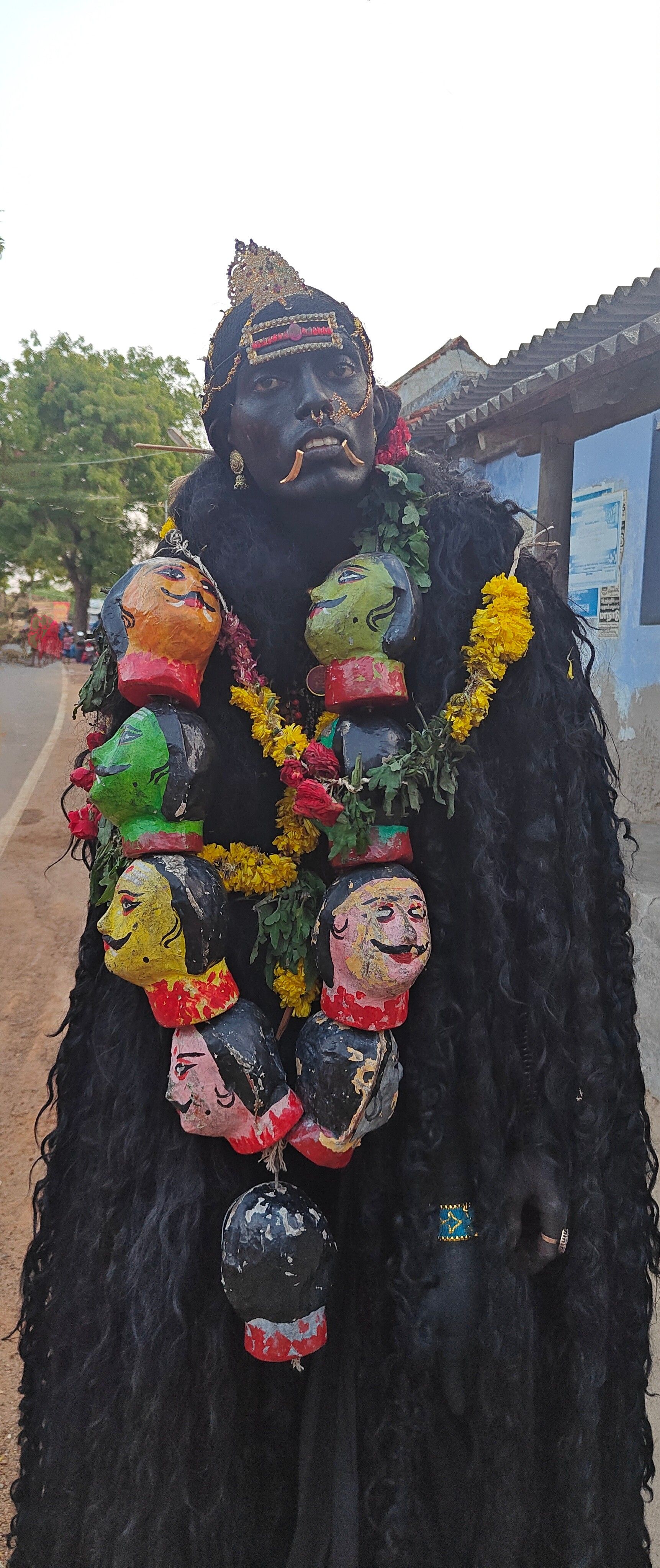
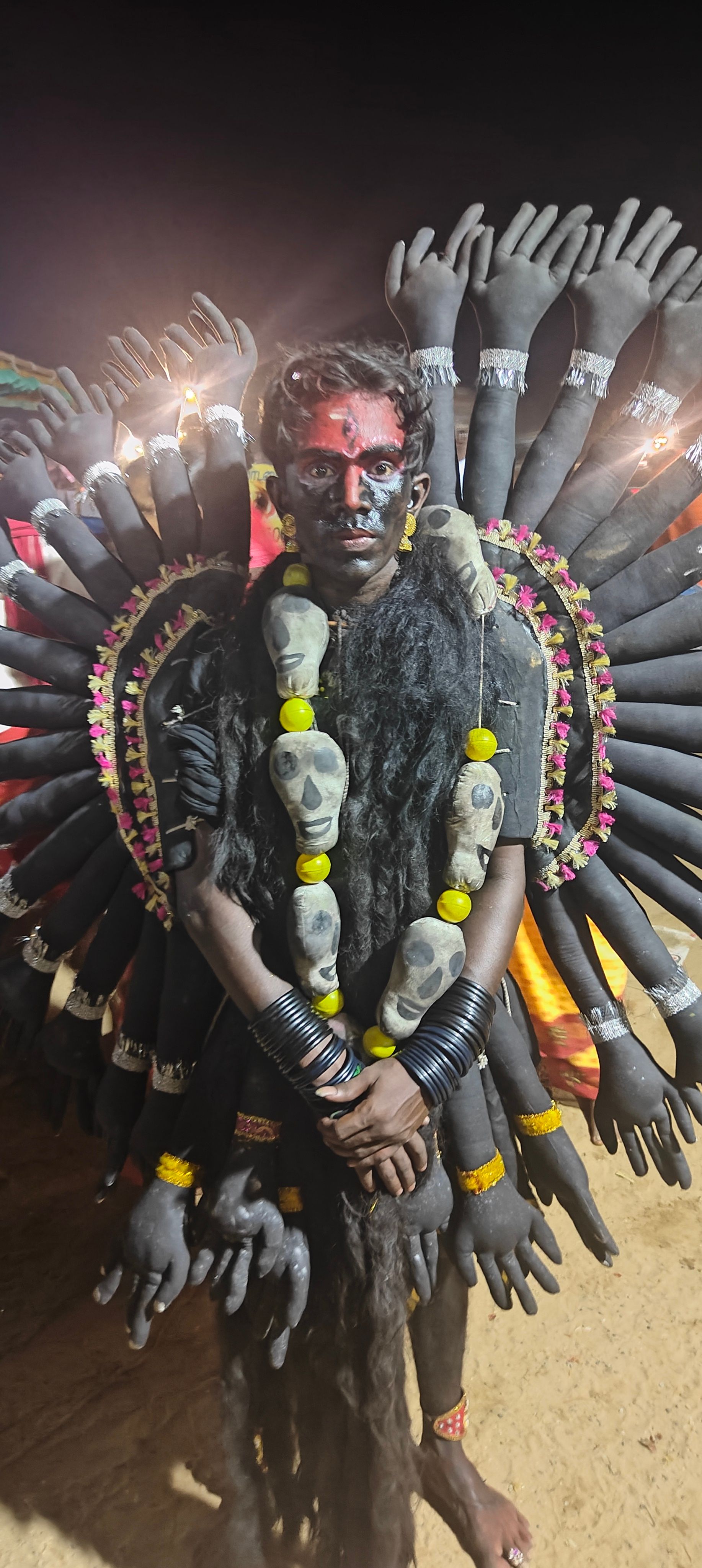
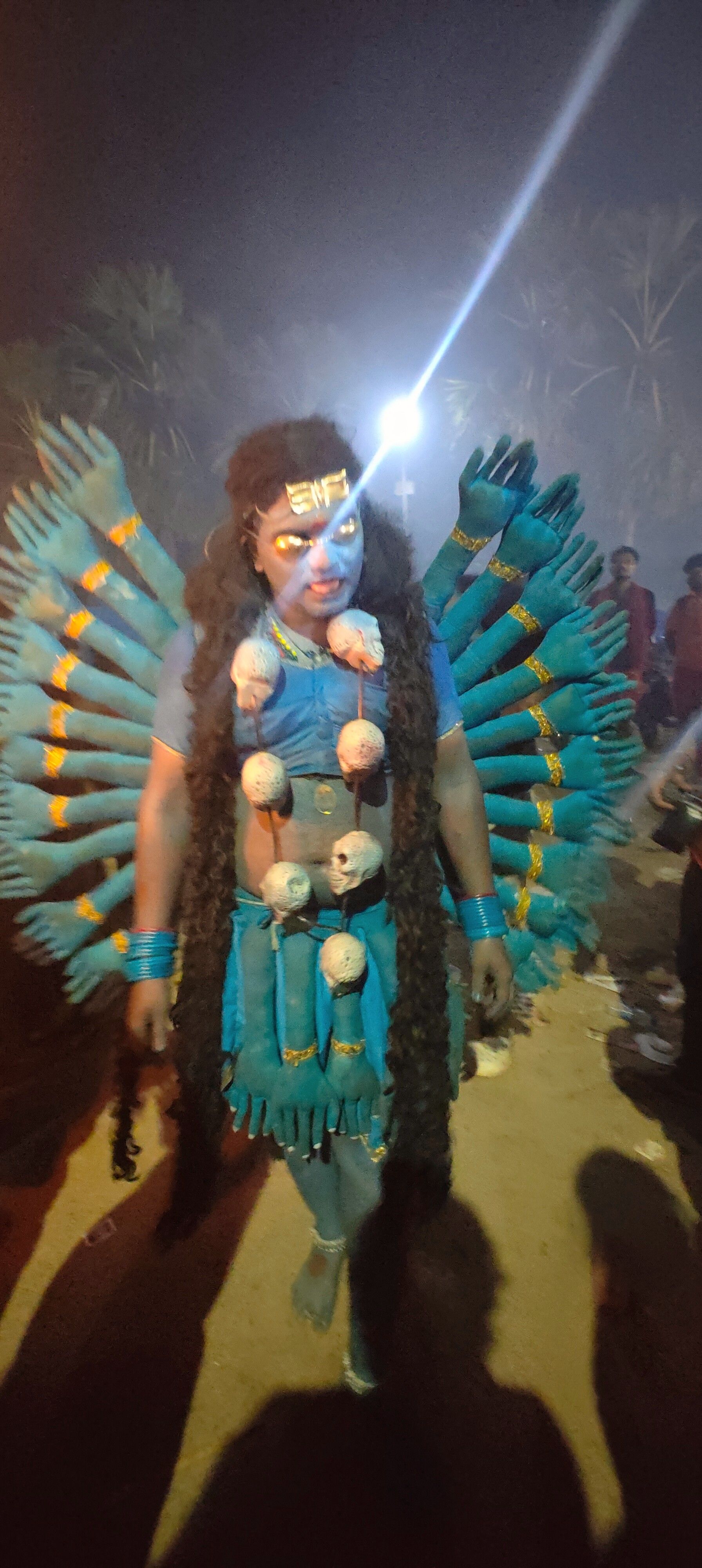
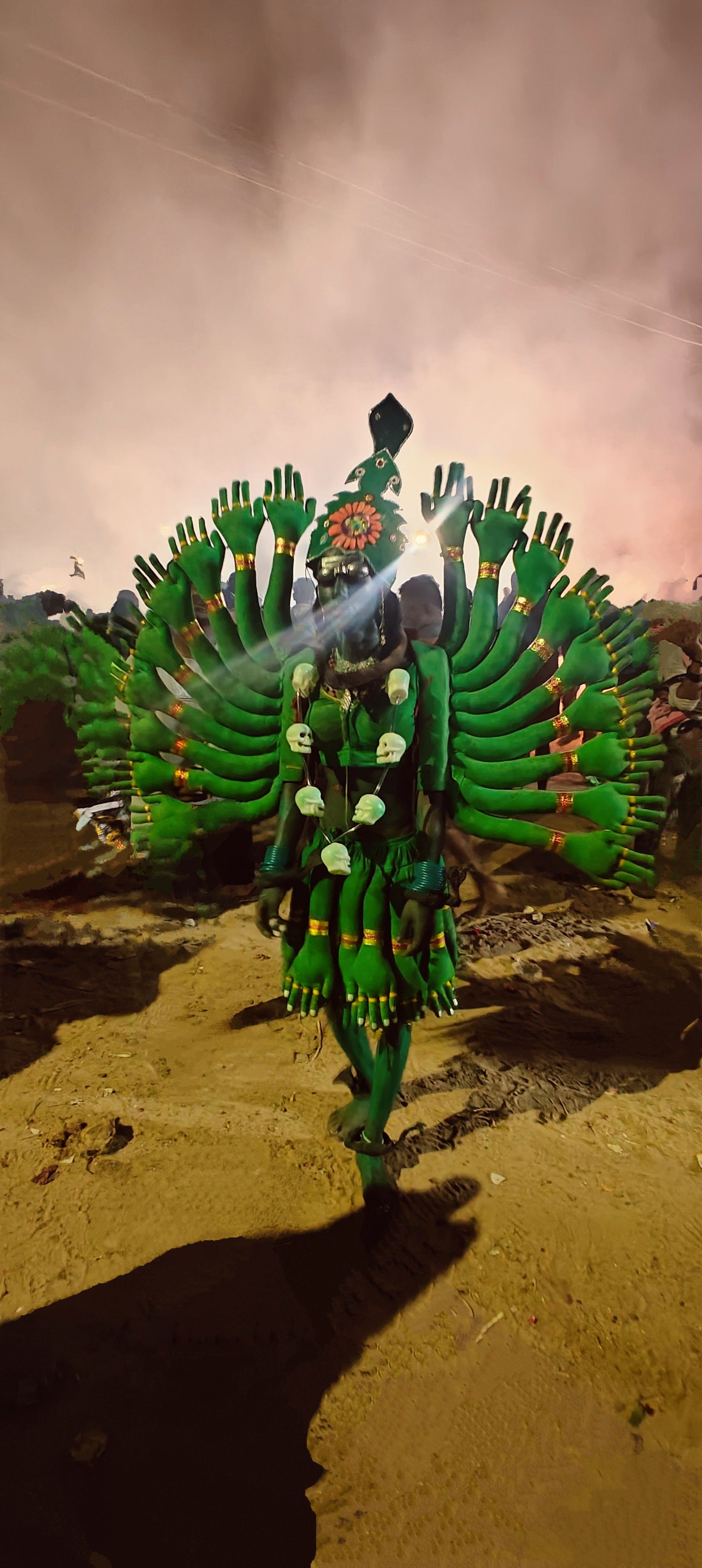
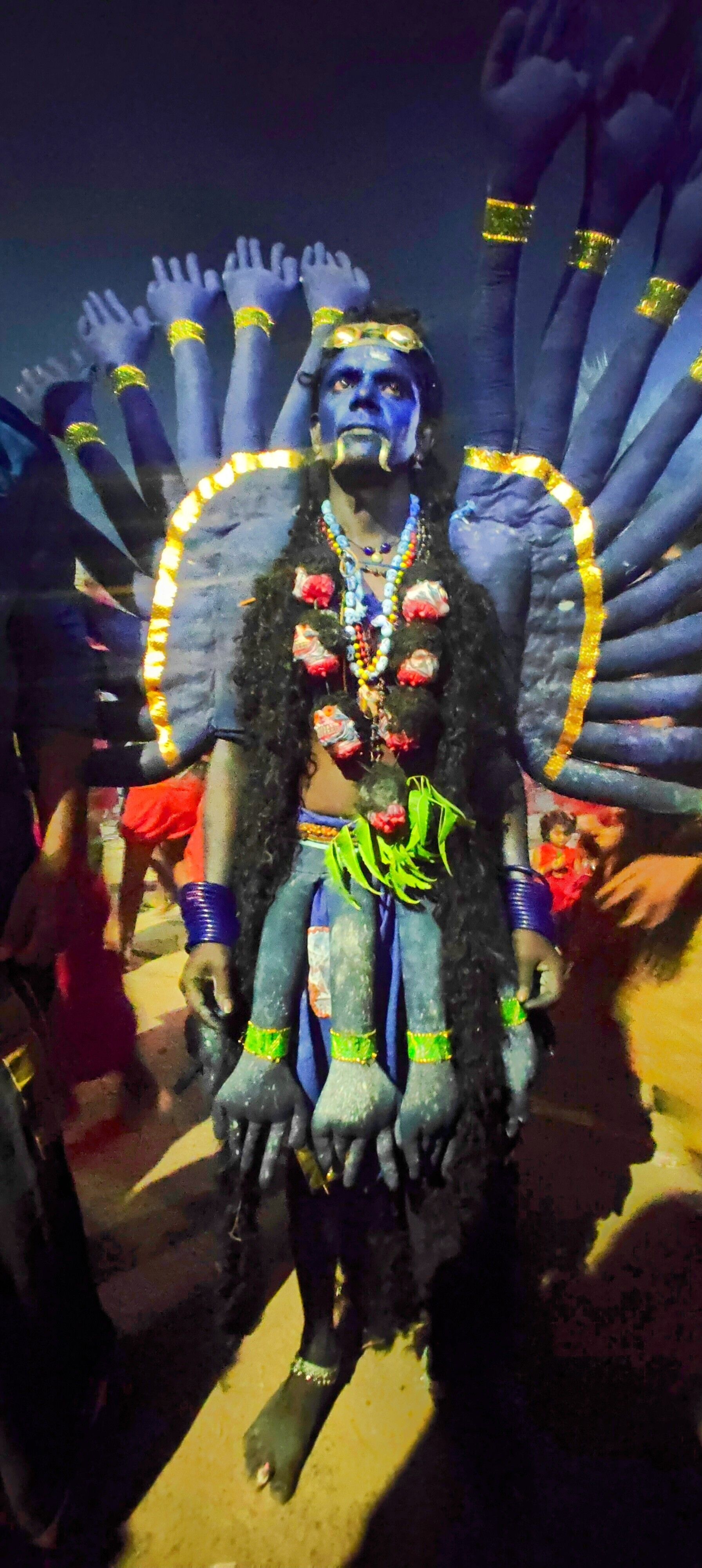
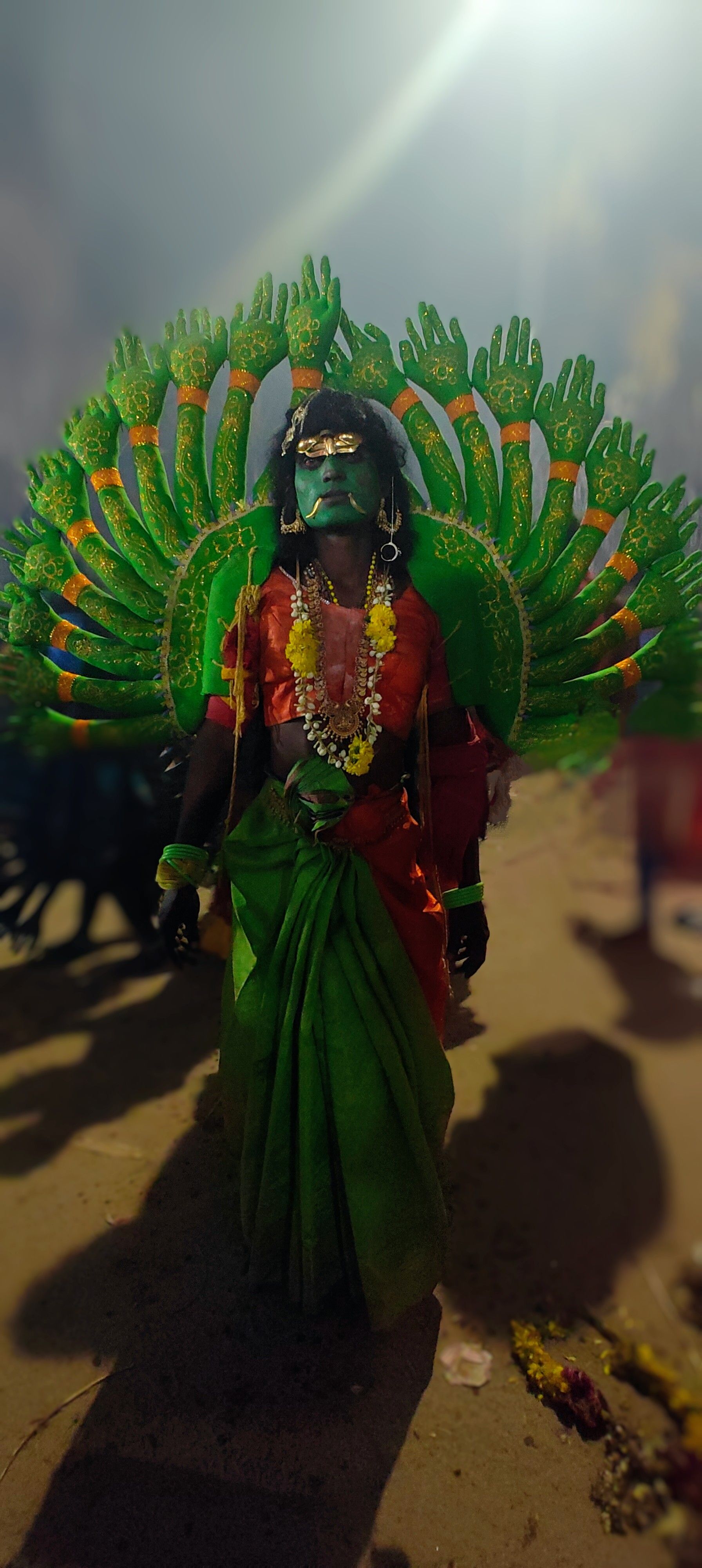
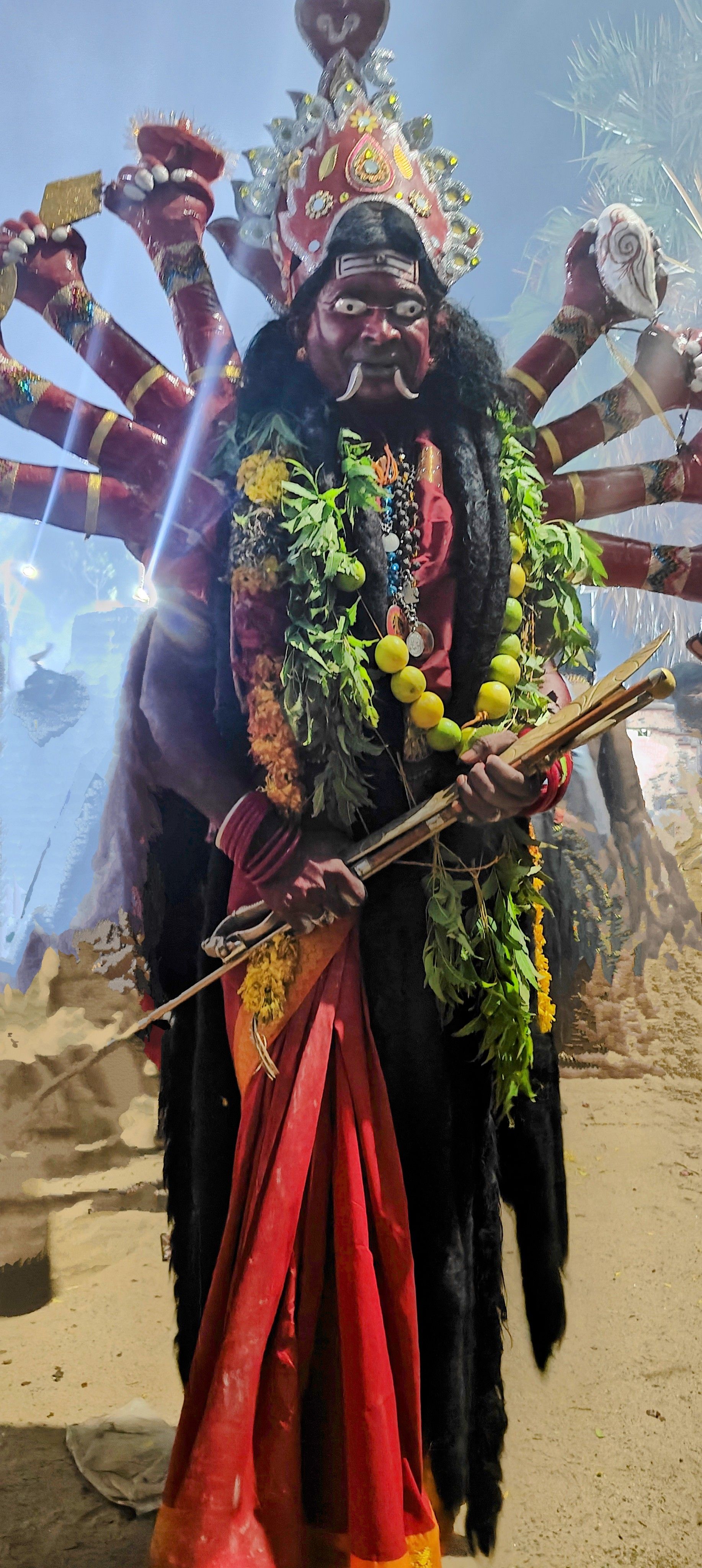
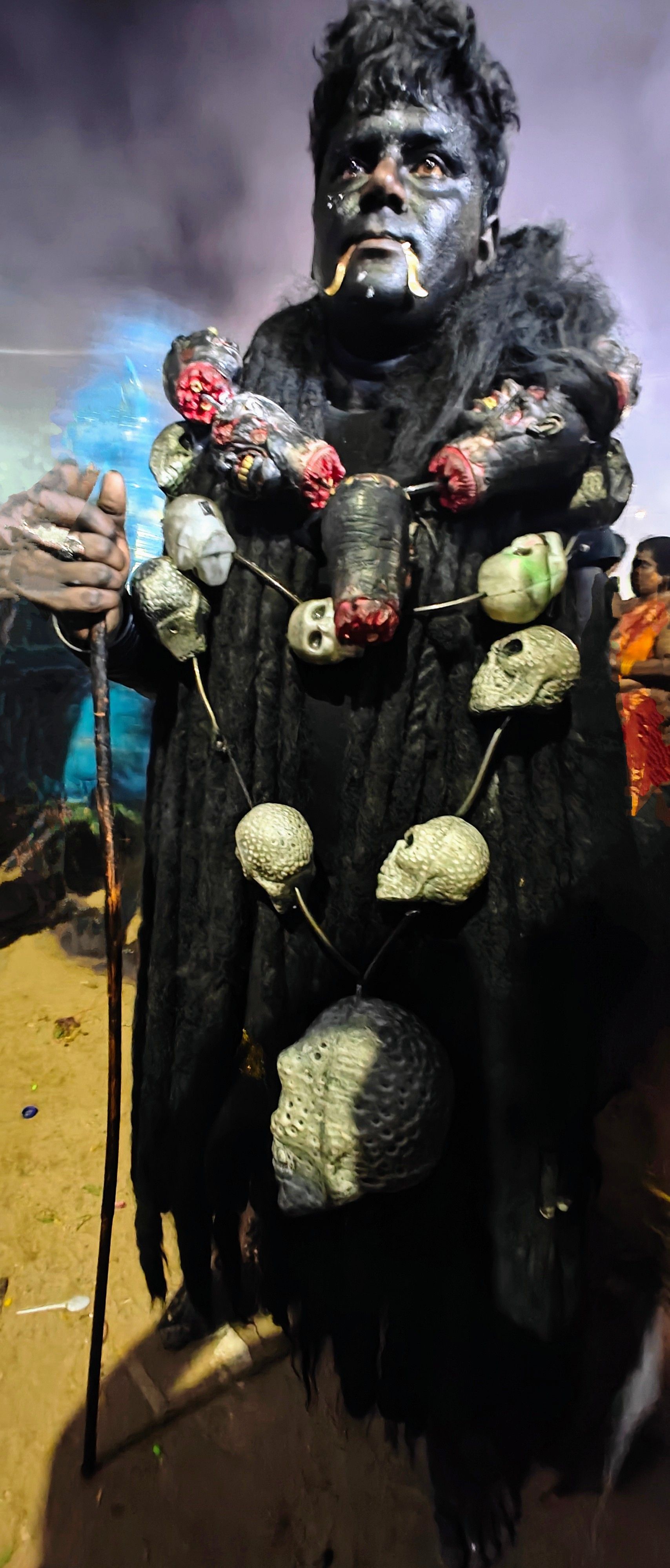
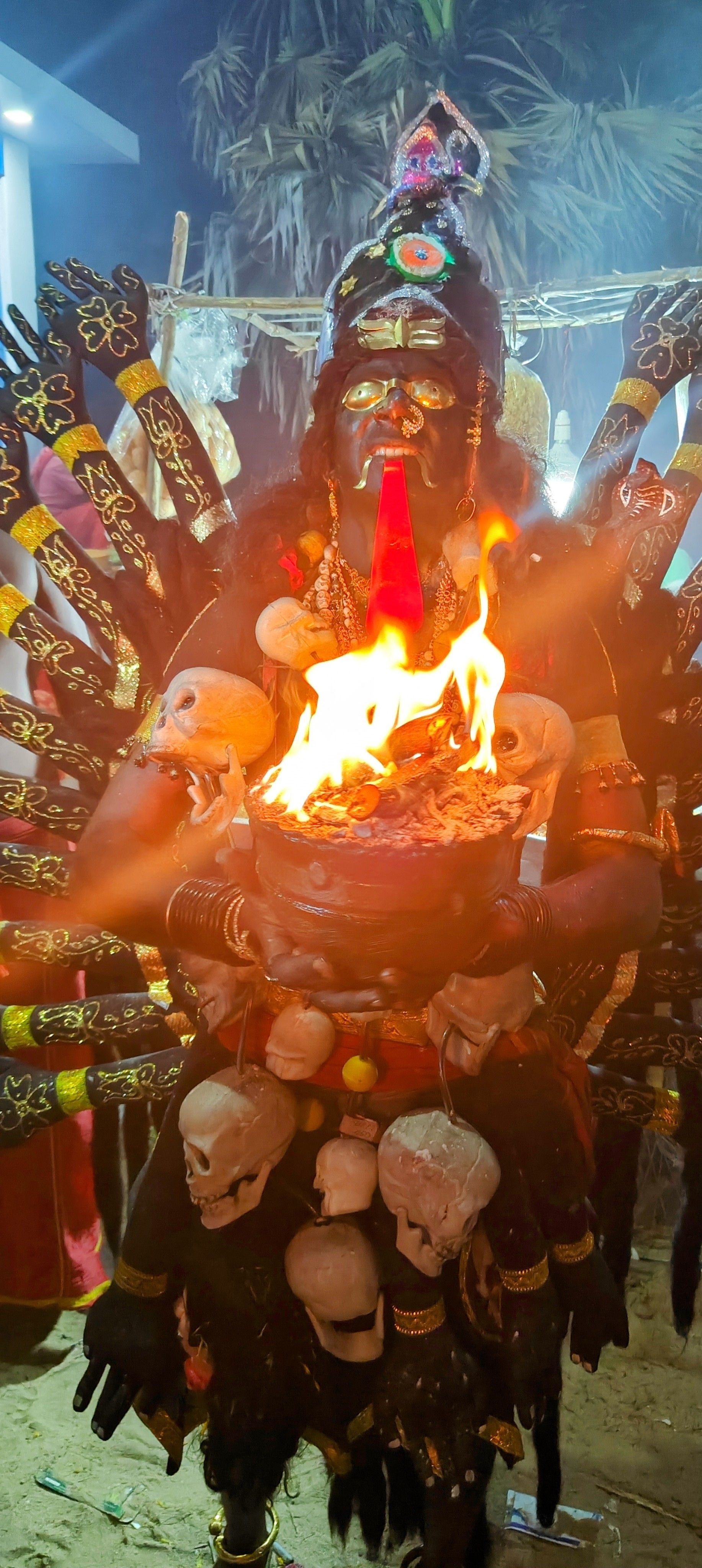
The scenes that I witnessed are beyond explainable. An old lady asked for suggestions on how to deal with her problems. The character takes a pause and goes into a trance screaming out loud. He takes her close to him and whispers to her. The lady is uncontrollably full of tears weeping, joyfully. The character goes on to dip his hand in the sacred ash and with a palm full smears it on her forehead and holds her by the head close to him.
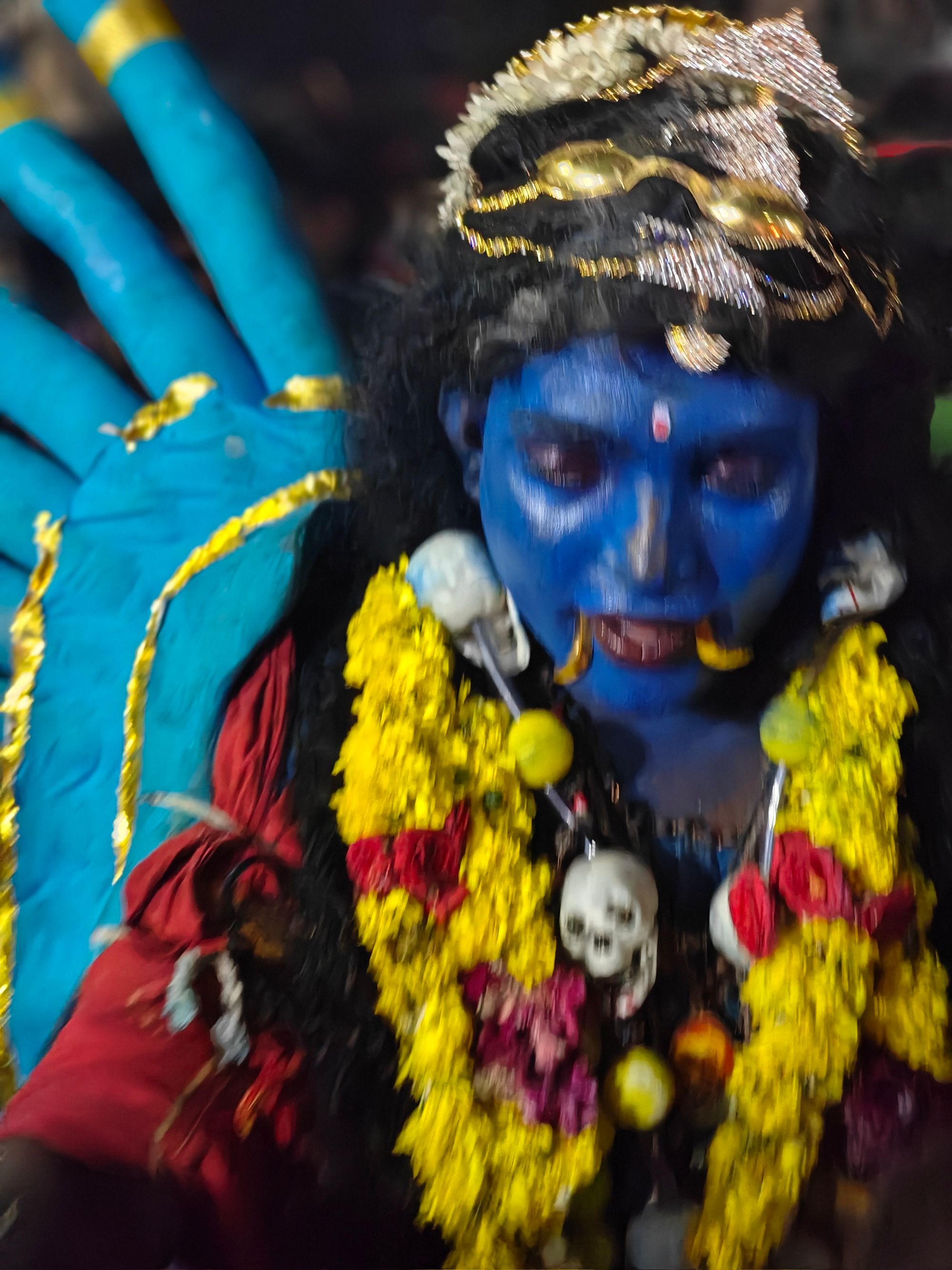
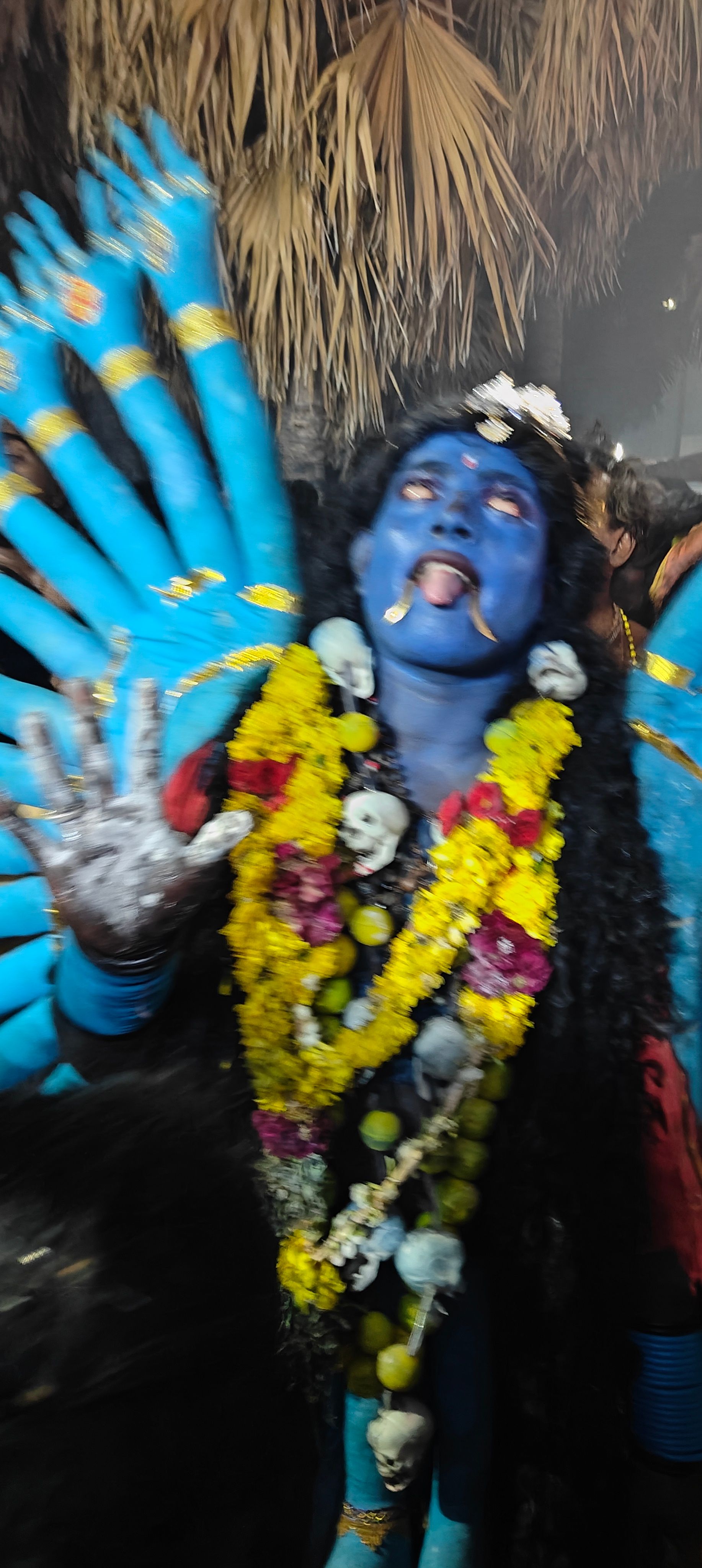
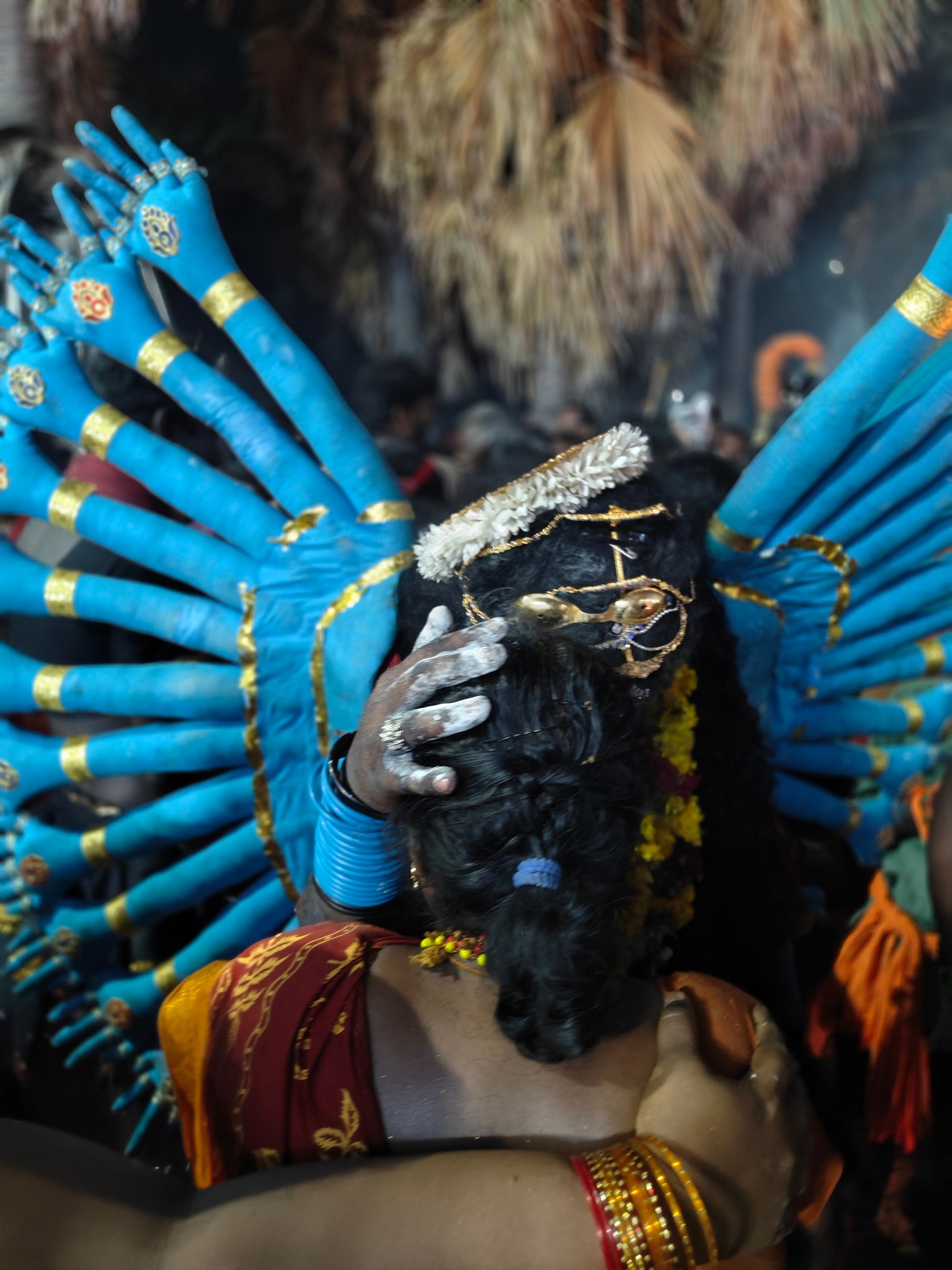
Another such act is when the relatives want a character to put the fire pot in the place assigned for it. However, the character denies it and continues to dance in a trance.
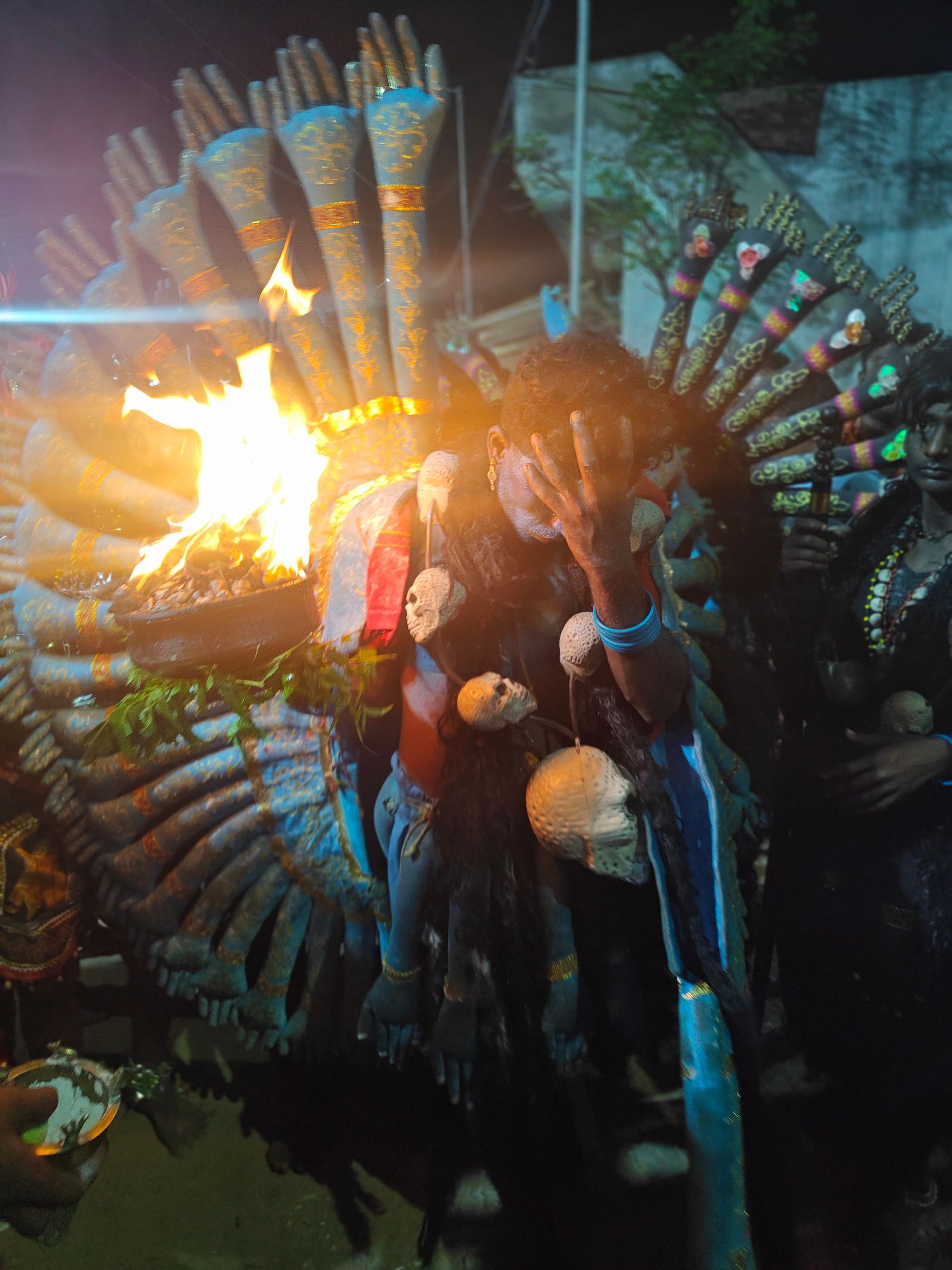
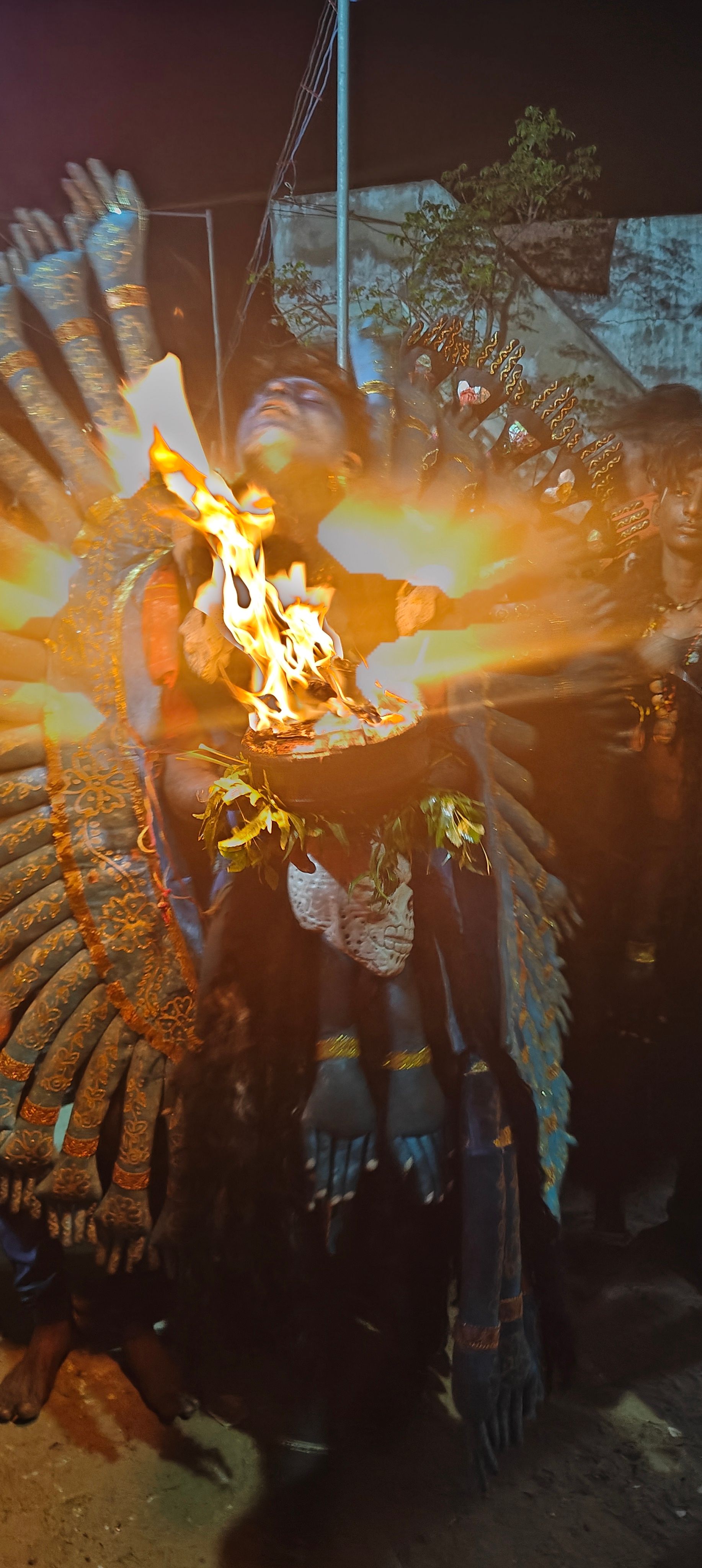

One common scene throughout the festive area is this. A group of people accompanied by one or more performers who have gone through the fast and kept themselves conducive for the act on the D day.
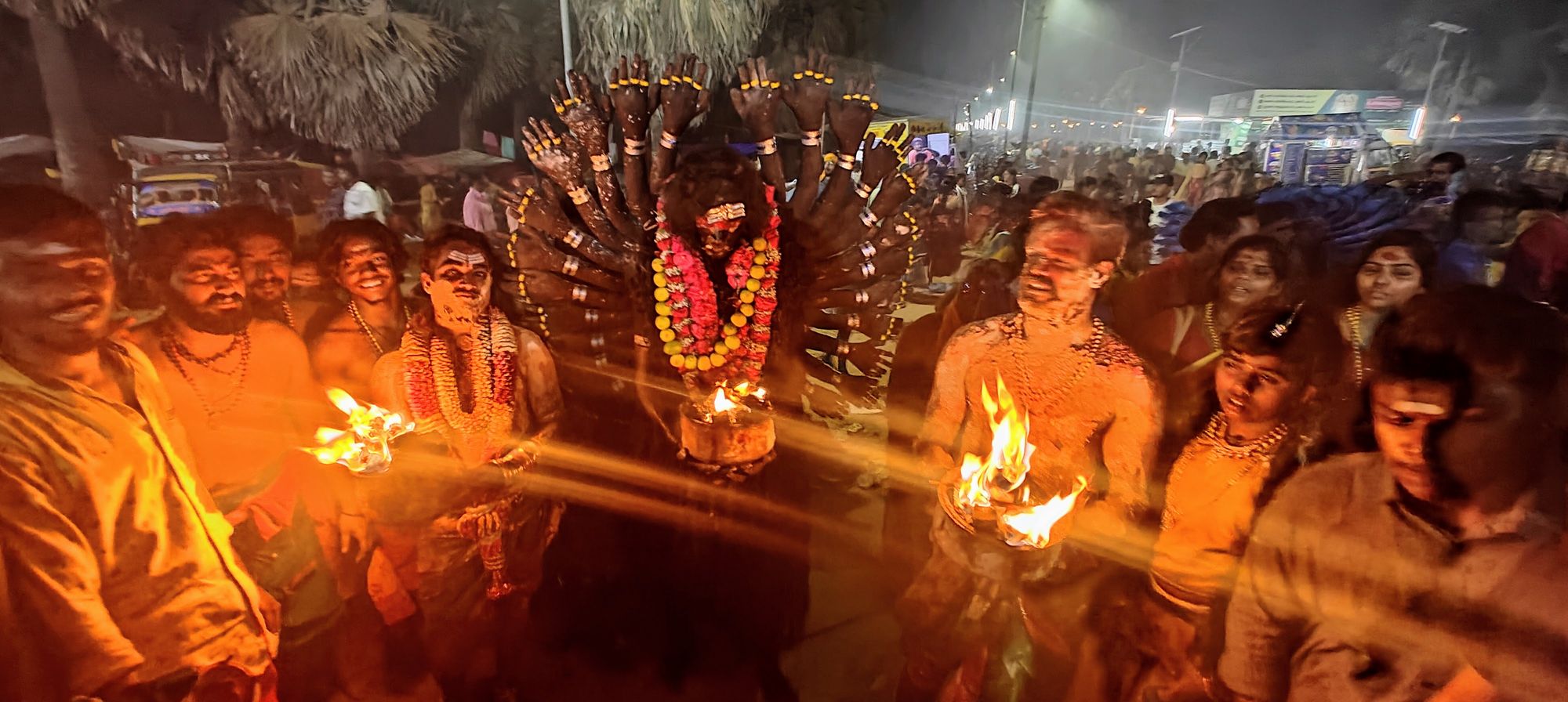
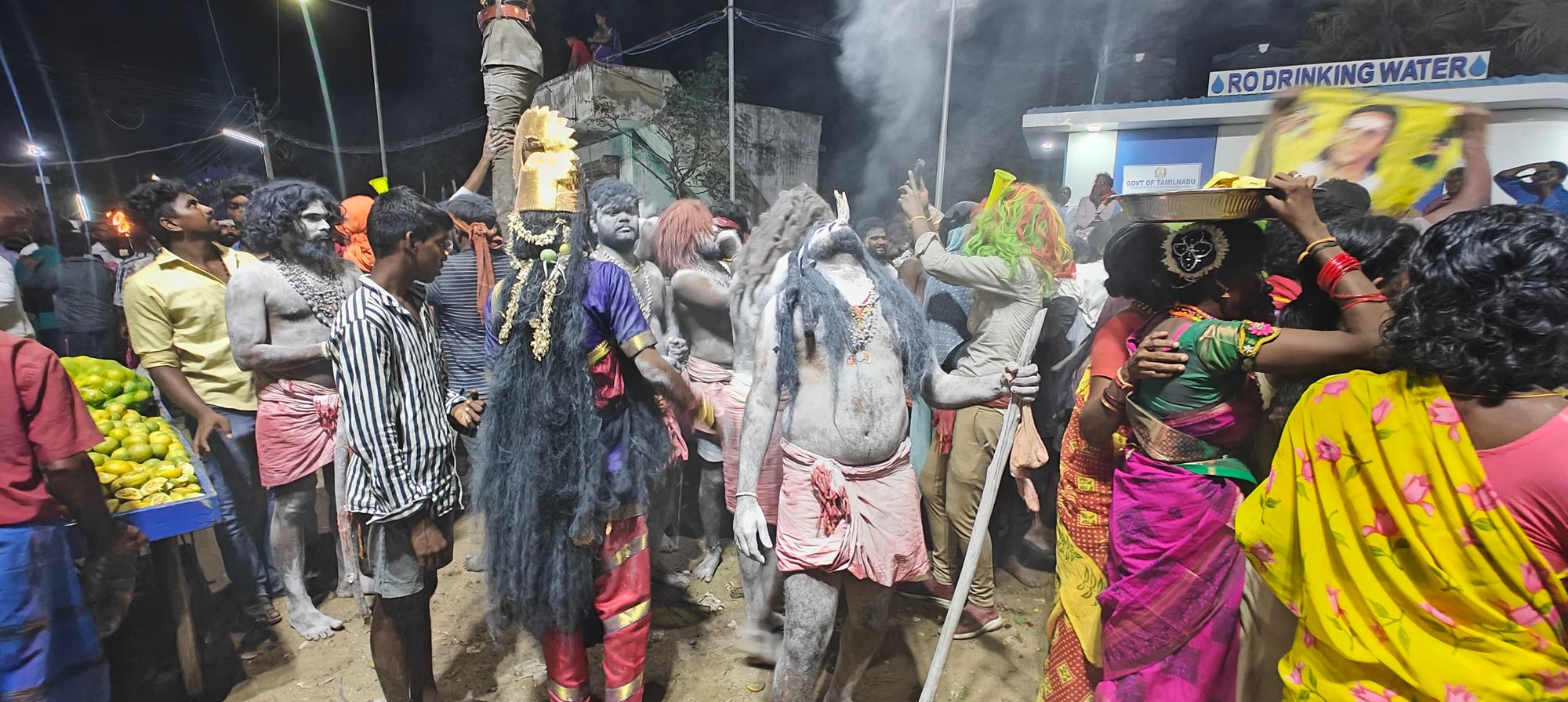
Throughout the performance area, you will hear people screaming the chants of the goddess Kali.
Jai Kaali. Om Kaali. Jai Jai Kaali
Jai Kaali. Om Kaali. Jai Jai Kaali
It was not all fun for everyone. There were moments of disappointment and silence. A performer along with his group was dancing with the fire pot for over two minutes. He had some really good moves. As the crowd was encouraging him a photographer from the crowd wanted the performer to do the spin again. The crowd cheered for it and just when the performer was completing his spin he collided with another performer and the fire pot fell and broke. Everyone around turned silent. The performers were in shock. After a long pause of silence someone in the crowd said, Om Kaali, and everyone roared Jai Jai Kaali, cheering the performer, and moved towards the ocean to remove the masks.
The vibrant colors, intricate costumes, the electrifying energy of the performances, fervent devotion of the devotees, and spiritual fervor painted a cultural tapestry that is an experience of a lifetime. Beyond the joyous moments and communal celebrations, the festival revealed the deep-rooted cultural tapestry that binds the community together. Kulasai Dussehra stands not only as a grand spectacle but also as a testament to the enduring spirit of tradition, unity, and spiritual connection that reminds the essence of life.
Lastly, this was one of my favorite performances and it summarises the entire event for me. The character here was in a trance state throughout. People who went near him were in instant happiness as he smeared ash on people's foreheads and said, "No fear, no worries, no hardships, no difficulties. Be happy."
